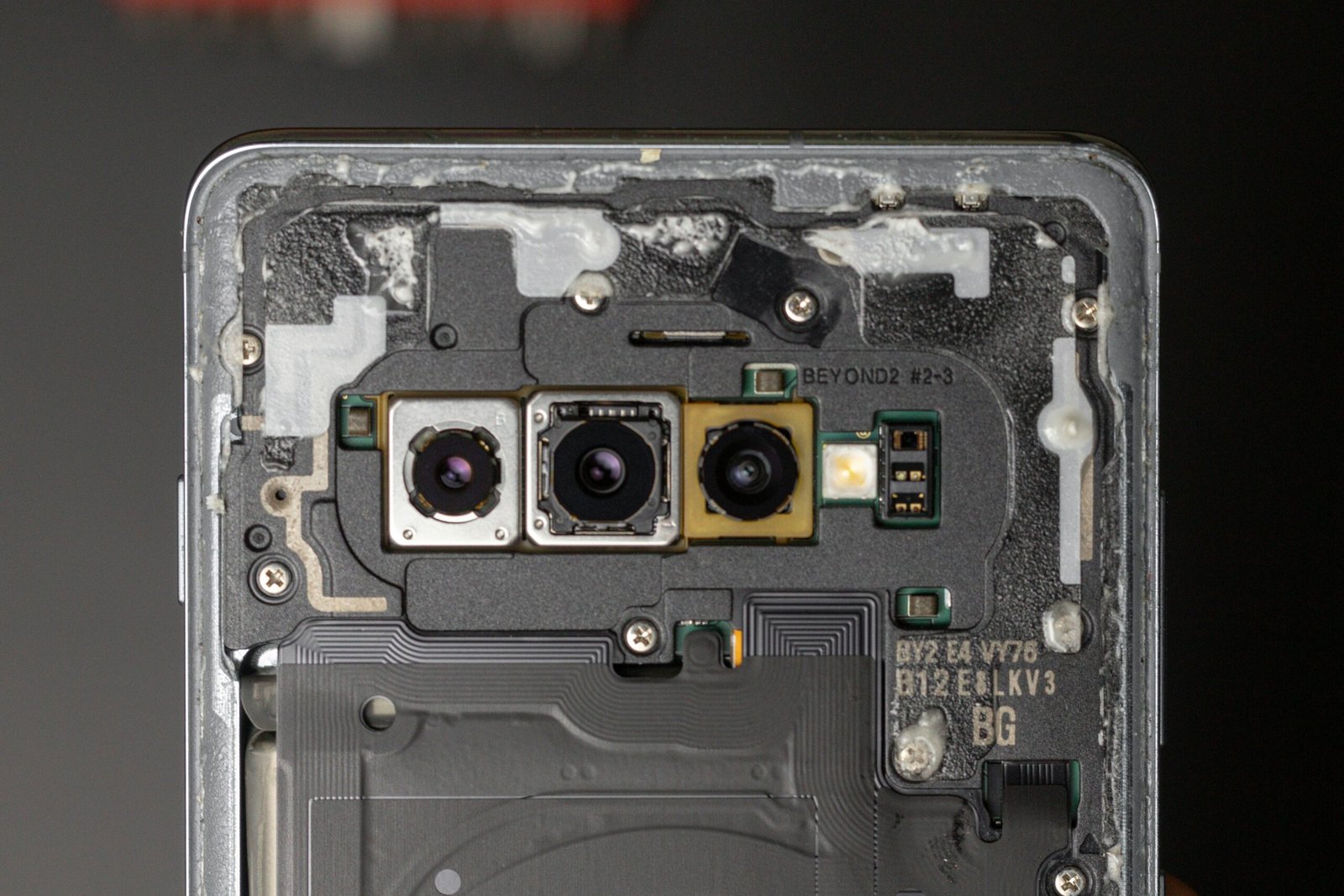Exploring the Future: Application and Development Prospects of Customized Backlight Technology
Introduction to Customized Backlight Technology
Customized backlight technology refers to the advanced innovation in the lighting solutions utilized for displays in various devices. It encompasses a range of techniques aimed at optimizing illumination based on specific requirements, enhancing not only aesthetic appeal but also functionality. This technology is essential in multiple industries, including electronics, automotive, and advertising, where visual presentation plays a critical role.
The fundamental working principle of customized backlight technology lies in its ability to tailor illumination intensity, color, and distribution based on the needs of the application’s specific context. Unlike generic backlighting solutions that often carry a one-size-fits-all approach, customized options are designed to meet unique specifications. These tailored solutions provide significant advantages, particularly in terms of user experience and energy efficiency.
One of the core benefits of customized backlighting is the enhanced user experience it facilitates. Displays with customized lighting options can effectively reduce eye strain and improve visibility in various environments. Additionally, the flexibility associated with customizing backlight solutions allows designers to create visually striking and functional products that cater directly to a target audience’s preferences.
In terms of energy efficiency, customized backlighting often employs advanced technologies such as Organic Light-Emitting Diodes (OLEDs) and Light Emitting Diodes (LEDs). These innovations not only consume less power but also allow for granular control over lighting conditions. The distinct capabilities of OLEDs, for example, enable true blacks and a wider color gamut, making them a popular choice in high-end applications. Similarly, LEDs are known for their longevity and ability to produce bright, uniform lighting.
Understanding these differences and innovations in customized backlight technology sets the foundation for the exploration of its applications and developmental prospects in subsequent sections. The shift from traditional approaches to customized solutions signifies a pivotal transformation in how we approach display technologies.
Applications of Customized Backlight in Various Industries
Customized backlight technology has emerged as a pivotal component across various industries, enhancing both functionality and aesthetic appeal. In the consumer electronics sector, devices such as smartphones, tablets, and televisions have increasingly adopted customized backlighting to improve visibility and energy efficiency. For instance, high-end OLED screens utilize tailored backlighting to provide vibrant colors, deep contrasts, and reduced power consumption, thereby significantly boosting user experience and device performance.
Moreover, the automotive industry has recognized the utility of customized backlight technology, particularly in dashboard displays and infotainment systems. Automotive manufacturers leverage this technology to create visually engaging interfaces that enhance driver interaction while improving safety through better visibility. Case studies highlight how companies like BMW and Mercedes-Benz have integrated ambient lighting into their vehicle designs, allowing for personalized driving experiences and increased functionality.
In healthcare, customized backlight solutions are proving indispensable, particularly in medical imaging and display devices. Laboratories rely on advanced backlighting to achieve accurate color reproduction and contrast in diagnostic equipment, such as monitors used in radiology. These backlit displays not only facilitate precise readings but also improve ergonomics, making it easier for healthcare professionals to interpret data swiftly and accurately.
Advertising is yet another sector benefiting from customized backlighting, where visual impact is crucial. Companies utilize backlit signs and displays to capture consumer attention effectively in retail environments. Campaigns employing LED-backlit billboards have shown significant increases in viewer engagement, driving sales and brand awareness. Notably, brands like Coca-Cola and Nike have successfully utilized dynamic customized lighting in their promotional strategies, illustrating the importance of backlighting in modern advertising.
As these examples demonstrate, customized backlight technology is swiftly becoming integral to various domains, underscoring its impact on product performance, user engagement, and aesthetic innovation.
Future Development Trends in Customized Backlight Technology
The future of customized backlight technology is poised for significant advancements, driven by a growing demand for enhanced visual experiences and energy efficiency. One of the most notable trends is the development of improved materials that offer better light distribution and reduced energy consumption. Recent research has focused on exploring organic light-emitting diodes (OLEDs) and quantum dot technology, both of which provide the potential for higher efficiency and superior color accuracy. The incorporation of these materials is expected to redefine the standard for backlighting in various devices, from televisions to smartphones.
Furthermore, the integration of customized backlight technology with the Internet of Things (IoT) is becoming increasingly relevant. This smart integration allows for dynamic adjustments based on environmental conditions and user preferences, creating adaptive lighting solutions. For instance, smart backlighting systems can change intensity and color temperature depending on the time of day or specific tasks, significantly enhancing user experience while minimizing energy use. As IoT devices proliferate, the relevance of adaptive backlighting solutions will continue to grow.
Another significant trend is the emphasis on eco-friendliness within customized backlight technology. Manufacturers are prioritizing the reduction of their carbon footprint through sustainable practices, such as utilizing recyclable materials and designing energy-efficient products. As consumers become more environmentally conscious, the demand for eco-friendly solutions is anticipated to rise, driving further investment in research and development of sustainable backlight technologies.
In summary, the future development trends in customized backlight technology are shaped by advancements in materials, smart integration with IoT devices, and a commitment to sustainability. As these trends continue to evolve, they are likely to catalyze innovations that impact a variety of industries, enhancing user experiences and promoting energy-efficient solutions.
Challenges and Considerations in Implementing Customized Backlight Solutions
Customized backlight technology presents a range of unique challenges that manufacturers and designers must navigate during implementation. One significant challenge involves the cost implications associated with the development of bespoke solutions. Custom backlighting often requires specialized materials and advanced manufacturing processes, resulting in higher production costs compared to standard backlighting options. Organizations must carefully assess their budgets and forecast the return on investment before committing to customized designs.
Another crucial consideration is the technological limitations that may manifest during the development phase. Designers need to account for factors such as brightness consistency, power efficiency, and color accuracy. The complexity of integrating customized backlighting with existing technologies can hinder progress, particularly when attempting to achieve a harmonious interplay between the backlighting system and the display panel. Therefore, thorough research into available technologies is essential to identify suitable solutions.
Compatibility issues also pose a significant challenge in the implementation of customized backlight solutions. The diversity of devices on the market necessitates that manufacturers ensure their customized backlighting systems are adaptable and compatible across various platforms. This can often require extensive testing to ascertain how the backlighting interacts with different display technology, ultimately prolonging the development timeline.
Moreover, the demand for skilled labor to oversee customization further complicates the implementation process. Companies should invest in training and retaining a workforce proficient in both traditional and innovative backlighting technologies to overcome this challenge. Additionally, strategic planning can streamline the development process, enabling teams to identify potential obstacles early and address them proactively. Collaboration among designers, manufacturers, and technicians is vital to realize successful outcomes. By fostering an environment of innovation and adaptable thinking, organizations can navigate the hurdles associated with customized backlighting effectively.







